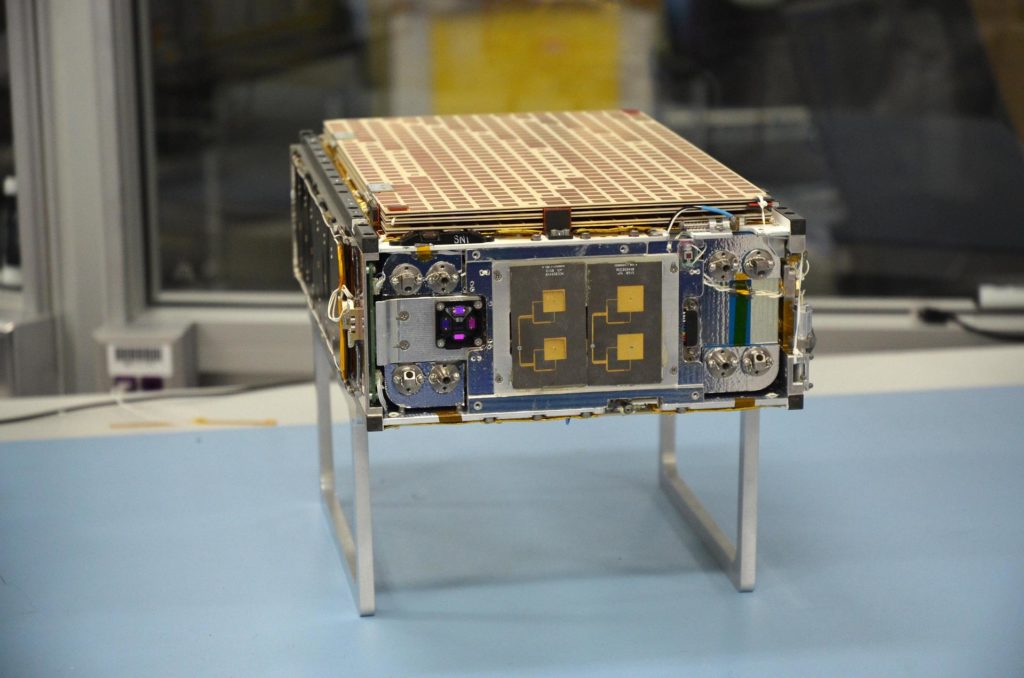Scientists Discover That Mars is Rotating Faster Using InSight Data
In December 2022, NASA lost contact with its InSight Mars lander after it had been operating on the Martian surface for over four years. Despite this setback, scientists have continued to analyze the data collected by InSight and have made some exciting discoveries. One team of scientists, led by Sebastien Le Maistre of the Royal Observatory of Belgium, recently published research that utilized InSight’s Rotation and Interior Structure Experiment (RISE) instrument to show that Mars’ rotational speed is increasing.
The RISE instrument is a collection of radio transponders and antennas that were used to make precise measurements of Mars’ rotation. Le Maistre and his team found that Mars’ rotational speed is accelerating by approximately four milliarcseconds per year squared. This increase in rotational speed corresponds to a decrease in the length of the Martian day by a fraction of a millisecond per year. These measurements are the most precise ever taken and even reveal how the planet wobbles due to the movement of its molten metal core.
The cause of this acceleration in rotation is still uncertain. One possibility is that ice accumulated on the polar ice caps or post-glacial rebound caused the acceleration. That’s similar to how a spinning ice skater speeds up after pulling their arms inward due to conservation of angular momentum.
The use of radio waves to study Mars’ characteristics is not unique to InSight. Previous Mars landers, such as the Viking landers and Pathfinder, also employed radio waves to learn more about the planet’s interior. However, InSight’s access to advanced radio technology and upgrades to NASA’s Deep Space Network allowed for data that was five times more accurate than previous missions.
So how did Le Maistre and his team measure the rotational speed of Mars? While InSight was still operational, the scientists used the Deep Space Network to beam a radio signal at the lander, which was located in the Elysium Planitia region of Mars. The RISE instrument reflected the signal back to Earth, and scientists analyzed the data for small changes in the signal’s frequency caused by the Doppler shift. By measuring this shift in frequency, the scientists were able to determine Mars’ rotational speed.
Due to the extremely small variations in the signal frequencies, Le Maistre and his team had to analyze frequency data from InSight’s first 900 Martian days to detect the variations. Additionally, they had to eliminate sources of noise such as moisture from Earth’s atmosphere and solar wind. Despite these challenges, the team was able to make historic measurements and reveal Mars’ nutation, which is its wobbling motion caused by the sloshing of its molten metal core.
The RISE data allowed the team to measure the size of Mars’ core, which they found to have a radius of approximately 1,835 kilometers. The nutation also provided further insight into the shape and characteristics of the core. However, Le Maistre and his team didn’t stop there. They compared their measurement of the core’s size to other measurements derived from data collected by InSight’s seismometer. All three measurements showed that the core was anywhere between 1,790 and 1,850 kilometers.
These results are just the beginning for Le Maistre and his team. They will continue to analyze the RISE data in hopes of learning more about Mars’ rotation, core, and other planetary characteristics. Although InSight’s mission may be over, the data it gathered will continue to allow scientists to make groundbreaking discoveries in planetary science for years to come.
The findings of Le Maistre et al. were published in the journal Nature in June 2023. Despite losing contact with InSight, NASA and scientists around the world are still able to uncover new and exciting information about Mars thanks to the incredible data collected by the lander. This mission has provided valuable insights into the red planet and has paved the way for future exploration and understanding of Mars.
